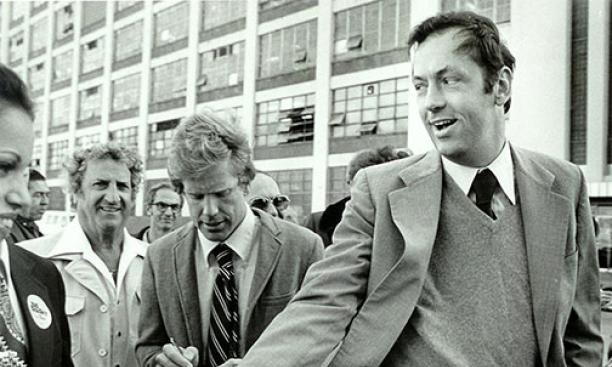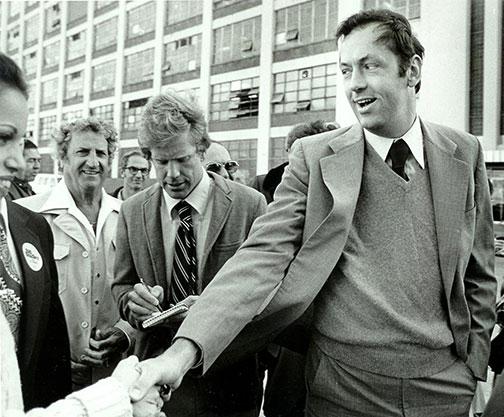
During my 36 years in the newspaper business, I often wondered whether journalists are primarily romantics or cynics. Of course, they are probably a little bit of both. But there’s no doubt that a romantic impulse propelled many of my colleagues into the profession: the desire to fix the world, to shine light into dark places, to comfort the afflicted and afflict the comfortable. They certainly weren’t drawn by the lure of riches.

Cynics expect the worst and glory in exposing and publicizing it; romantics expect the best and are shocked when they discover that the world is not a Disney-like utopia and that not everyone behaves according to their ideals.
Unfortunately, the news, by its very nature, tends to be negative and bad. It’s not news when an airplane lands safely; it is news when it crashes. It’s not news when a local official serves his community faithfully for years; it is news when he embezzles hundreds of thousands of dollars to finance Las Vegas vacations and to construct a second home on the Jersey Shore. It’s the aberrations that capture attention and generate headlines.
As author and former New York Times reporter Gay Talese has observed: “Most journalists are restless voyeurs who see the warts on the world, the imperfections in people and places. ... Gloom is their game, the spectacle their passion, normality their nemesis.”
To me, the news often seems like so much trivia and ephemera, sound and fury signifying nothing, packaged in sensational confections of breathless urgency, most of it either boring or depressing. It’s a daily dose of dismal and stultifying psychic clutter and mental static that we don't really need to know, all with the life span of an adult mayfly, perishable as today’s fresh bread, concocted by harried editors who are drawn reflexively to controversy and conflict, the obvious and superficial, and defiantly wedded to convention and suspicious of imagination, complexity, nuance, profundity, and the slightest deviation from standard practice.
The constant barrage of negative information distorts reality, frays our nerves, poisons our outlook. The relentless presentation of problems and issues leads to “crisis fatigue,” making us feel fearful, frustrated, impotent, discouraged. The news, in short, not only can spoil your day but also threaten your mental health. Little wonder that alternative-health sage Andrew Weil recommends what he calls a “news fast.”
In his book Spontaneous Healing, Weil writes: “A major source of my own mental turmoil is the news. The percentage of stories that make me feel good is very small. The percentage of stories that make me feel anxious or outraged is very large and increasing. As news media focus more and more on murder, mayhem, and misery, it is easy to forget that we have a choice as to whether to let this information into our minds and thoughts.”
In the next decade, in order to survive, the dead-tree newspaper you are familiar with now will become perforce all-digital, available only on computer screens and smartphones. As newspapers strive desperately to cling to their remaining readers, there’s growing recognition among the more enlightened of the value and necessity of stories that exalt and edify, uplift and inspire. A recent Wharton study of the most emailed stories in The New York Times found that they tended to be about emotion, wonder, and awe, topics that open and broaden the mind.
Unfortunately, there’s still a conviction in some newsrooms, and among some hard-boiled editors, that news isn’t really news unless it’s negative – unless it condemns, exposes, ridicules, or embarrasses. Snark and irony, the insouciant smirk, and supercilious sarcasm are prized as hip manifestations of clever wit and mature cynicism. Positive stories, meanwhile, are derided as “soft,” often dismissed as fluff and puffery. But good news doesn’t have to be smarmy and treacly. Positive stories can be executed with rigor and sophistication. They can be “thought scoops,” reported and written with insight and imagination, color and style, by “investigative moralists” who illuminate the way we live by gathering “the news of feeling,” which often can be far more revealing and truthful than the “important” and portentous headline stories on page one. There is (and ought to be), more to life – and the news – than crime and government, cops and courts, politics and elections, scandal and corruption, accidents and disasters.
Here are some examples of what I’d like to see more of, more often, to offset the depressing news on the front page:
The news of feeling: Often the traditional questions of journalism (who?, what?, when?, where? and why?) don’t go far enough. Much more telling may be this question: How did a particular news event make us feel? And respond? And what does how we feel and respond say about us and our times?
The nature of heroes: At a time when the media are obsessed with celebrities and the apotheosis of the worthless, we have lost sight of what it means to be a true hero, a word devalued through overuse and inappropriate use.
Ordinary people: Many seemingly ordinary people are quite extraordinary, their private struggles and ambitions far more worthy of attention and celebration than the strutting and rutting of vainglorious politicians, shallow TV and movie stars, thuggish pro athletes, and greedy corporate moguls.
Quirks, pastimes, and passions: The wacky and wonderful ways we distract ourselves and seek meaning and fulfillment during our precious instant on Planet Earth.
The power of one: The amazing ability of a single individual to initiate change, make a difference, elevate our aspirations. The bracing possibility of becoming, as the great physician-philosopher Lewis Thomas ’33 once put it, “uniquely useful.” The stirring sagas of those who persist and persevere against all odds.
Imparting wisdom: The human thirst for answers to the Big Questions and the eternal mysteries is never slaked. Stories that offer wisdom, evoke wonder and awe, and nourish the spirit and soul captivate readers and may be the partial salvation of newspapers and magazines.
The thought scoop: Not all stories are announced at press conferences or revealed in government reports. A sharp eye for trends, fresh ideas, and the news that oozes rather than breaks may provide a more accurate and insightful picture of what’s really going on, those subtle tectonic shifts that transform culture and society.
Beloved and unforgettable: Sharing the character and deeds of those cherished people whose sacred memory time will never erase.
Steady excellence: The value of a career, the worth of a life, is the diligent application of our talents, day in and day out, the constant pursuit of perfection, the sum of our quotidian efforts, humble and paltry individually perhaps, grand and glorious collectively. A salute to those who earn our respect and gratitude through consistent craftsmanship and reliably stellar performance over time.
For all their manifold faults and limitations, I still believe in the value and relevance of newspapers. In whatever form it eventually takes, the newspaper still has the potential to be not only “the poor man’s university” but also a mighty platform for elucidating and improving the human condition.
For 34 years, Art Carey ’72 was a Philadelphia Inquirer reporter, staff writer, editor, and columnist. He still contributes the “Well Being” column to the paper as well as occasional features.
